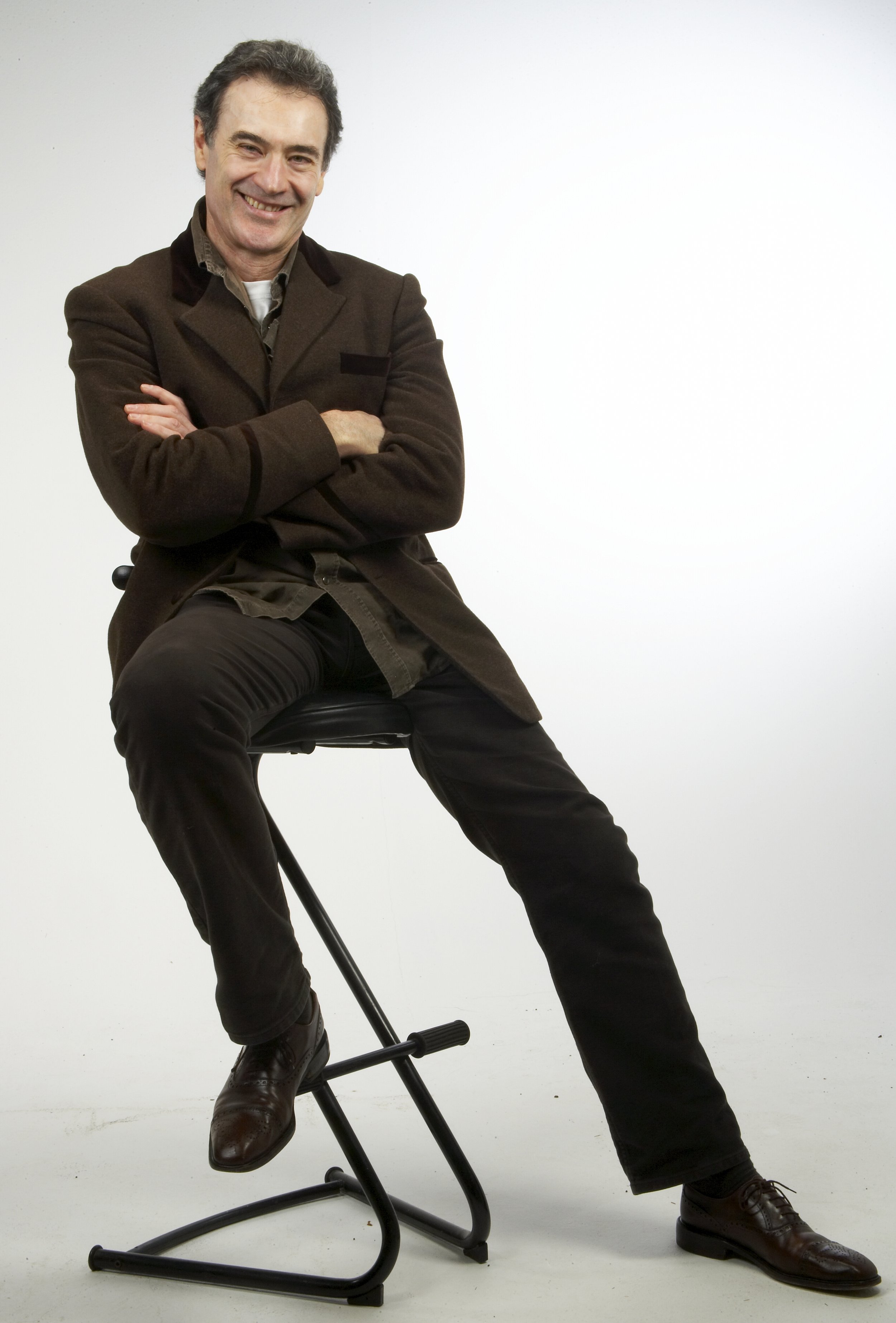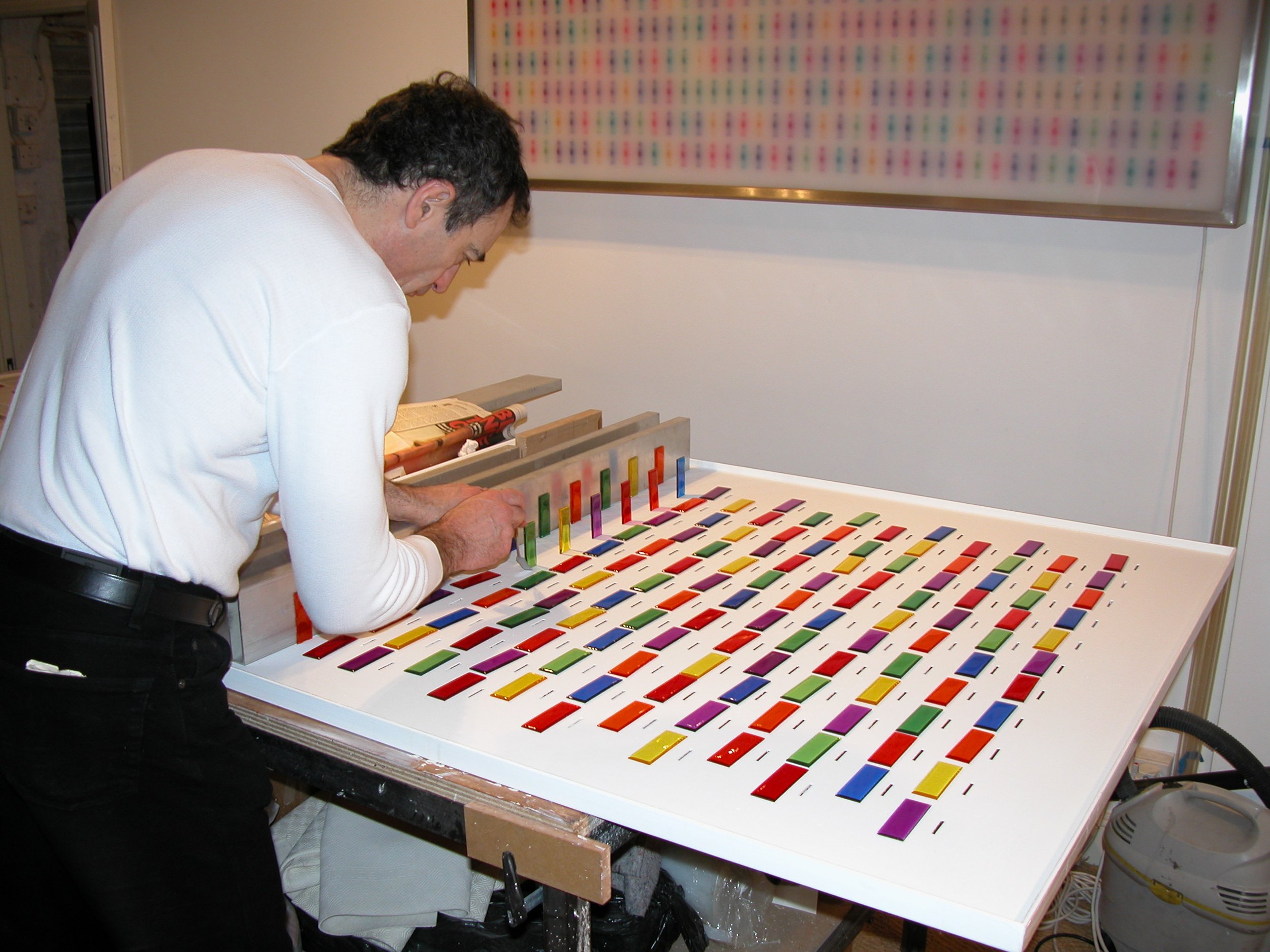A Gleaming Conversation with Mauro Perucchetti
Courtesy of Artist
Born in 1949 in Milan, Mauro Perucchetti was painting and sculpting from a very early age. Initially taking a job in Milan, he then moved to Rome and enrolled for classes in theatre studies. Starting to act in film, he worked with Elizabeth Taylor and Andy Warhol in The Driver's Seat (1974). More film roles followed, and he eventually set up a production company. Changing course once again, he relocated to London and threw himself into architectural and design work, designing unique homes and a car which was invited to show at the The London Car Show in 1992 at Earls Court in Kensington.
In 2000, Perucchetti sold his design and architectural practice and his home so he could become a full-time artist, something he couldn’t postpone any longer. His first major body of work which was instigated by the medical research of that time on Cloning, explored the dilemma between Cloning and religion and medical ethics. Perucchetti decided to use Jelly Babies as a representation of cloned human beings. This required the use of resin, and when Perucchetti discovered that no company in the world was able to undertake such a project due to its scale, which was deemed technically impossible, he embraced the challenge and, after much experimenting and breaking new grounds with what is physically feasible with that material he developed a system and designed the machines which would make this possible.
Perucchetti has taken part in numerous art fairs and, in 2011, was invited to present three monumental works at Rome's first-ever Roma Biennale of outdoor sculpture, the Rassegna Internazionale di Scultura di Roma.
Perucchetti's unmistakable, multicolored Jelly Baby Family representing multicultural society, with its chubby but elegant translucency, appeared at London's Marble Arch as part of Westminster Council's City of Sculpture Festival (2010-2011), at the Courchevel Winter Pop Sculpture Festival (2011-2012), and as a permanent installation in Singapore (both 2012); during Paris's Contemporary Art Fair (FIAC) in October 2012 it was exhibited against the historic backdrop of The Louvre. On Sky Arts television, it was selected for the 'Objects of Desire' series (2012) as one of the world's most coveted items. Entitled UNICUM, Perucchetti created a body of work that spanned two decades and was an abstract interpretation of surfaces that he created with pigmented resin in its purest form, demonstrating the incredible ability to express color, light, and form.
Perucchetti has pushed the boundaries as a painter and Sculptor and continues to explore innovative mediums that he creates like an alchemist. His new SUPERFCI work is organic, textural, and pulsating with energy and color that are unique and pioneering once again. His artwork has been internationally exhibited in galleries, museums, and art spaces such as Zakaim Gallery, Galerie 10, Imago Gallery, Sem Art Gallery, Madison Gallery, Anima Gallery, and many more. His art is in the Public collections of the DRAF David Robert Arts Foundation, London, UK; Bill and Melinda Gates Foundation, Seattle, USA. The Wellcome Trust, London, UK , The Gateway Foundation, St. Louis, Missouri, USA.
Also, his Public installations have graced the global in spaces such as the World Expo Dubai, UAE, Milan Expo, Milan, Italy, City of West Hollywood, USA Marble Arch, London, UK, Place du Louvre, Paris, France, Villa Borghese Roma Biennale, Rome Italy, Boca Raton Resort, Florida, USA, Plaza Singapura, Singapore.
I had the pleasure and honor of asking Mauro about what drives him to create, does he have other interests that are not art-related that impact how you create art and so much more.
I had the pleasure and honor of asking Mauro about what drives him to create, whether he has other interests that are not art-related that impact how he makes art, and so much more.
UZOMAH: Can you describe your artistic process?
MAURO: This is a difficult question to answer because I work with an infinite number of mediums. Since my early days, I wanted to be unique and became obsessed with creating art with new and unexplored techniques, which is a tall order considering how many creative people populate this world.
When I sculpt marble, for example, I use contemporary subjects but implement the oldest hand-carving techniques, which I admire. Nothing new there, as the only NEW would be using computers and that would kill it for me. With painting, I definitely use very personal techniques and work with materials that I tend to concoct, thanks to years of experimenting behind me.
Pigmented resin, though, is my signature medium. This is a material that, until recently, was unexploited in the art world and notoriously difficult to work with on a large scale. I started experimenting with this at an early age, before becoming a professional artist. I was so taken by how it works with light and color and became obsessed with it. When I was told all around the world that what I wanted to do was unachievable, I sold my house and my Company to finance the RD. I even had to design the machines necessary for the process when the scale of the artwork became impossible to handle by hand.
THE THINKER (man with gun),2011, Hand-carved white marble, 90 x 60 x 45 cm
U: How do you explore various societal, political, and cultural themes in your art?
M: First of all, I explore these issues in a folder in my brain where I dump files and notes based on decades of experiences all over the world. Throughout my life, I have been passionate about these subjects and I dove straight into them at any opportunity. I always say that it is unreasonable to expect a young person just emerging from school to be able to come up with the kind of passion and ability to be able to discuss such complicated subjects just from books. My art reflects personal experiences in my life which have been quite unorthodox, and I would be unable to comment on if I had not lived the way I did.
UNICUM, 1990, Pigmented resin and mirror stainless steel, 108 X 90 X 15 CM
U: What drives you to create?
M: I am inspired by the world around us, and especially by current world events and the explosive effect they have had on me and on many other people in our societies. I have a great appreciation for all forms of art, life, nature, and Justice. I find Religions and Politics (both of which are man-made) two of the driving forces in the world, and they are unbearable. I suffer a great deal of frustration that derives from the fact that I would like to fix some of the things that are wrong in this world, but I can’t, and it pisses me off. My art is the result of a cocktail of passions: a conscious passion for life and passion at a much more physical and instinctive level, something I can’t easily describe, some kind of powerful and empowering mix of adrenalin and endorphin that needs to come out.
And, finally, a passion for aesthetics.
Michelangelo 2020 A Tribute to Women
U: Do you have other interests that are not art-related that impact how you create art?
M: The human body/mind and its performance and martial arts and boxing. In the sixties, at age 19, I lived in Rome with my girlfriend, an African American activist 15 years my senior. During the 5 years we were together I was exposed the race issues and human rights movements of those days and I was fortunate to meet giant stars like Muhammed Ali, and Wilt Chamberlain who came to visit her. This was inspirational to me and corroborated an already existing love affair with sports, performance, and stoicism. I can confidently say that, ”mens sana in corpore sano” like the Romans used to say, has been working for me. Not without a small dose of sex drugs and rock & roll in the 60s, of course. Sports have given me inner strength, a sense of confidence and self-worth, and a solid anchor to the real world, without which I would have probably floated away like a little red balloon.
U: Describe the best piece of art you've created.
M: Marrying my wife Lorena has created a heavenly capsule that would be impossible to replicate: a Masterpiece of performance art. (Apologies, I do not have just one piece that I favor)
MODERN HEROES (BATMAN AND SUPERMAN),2009 Hand-carved white marble, (lifesize) 190 x 190 x 96 cm
U: How do you create art so that it interacts with the audience?
M: Easy answer: you just talk about what they do!
SUPERFICI, 2020, Mixed media, 125 X 125 CM
U: As a pioneer in the use of resin, what drew you to the use of such material?
M: Throughout my life, I have always been fascinated by new materials and worked very hard at discovering new mediums for my work. This is obvious in my art. I love Abstract as it is art in its purest form, completely devoid of any restrictions. The first body of work where I went full on with the use of pigmented resin was Unicum. A celebration of colour, form and technique, present in all Art., Unicum has a very unique fingerprint, which carries a sensuality not usually associated with this type of medium. I never get tired of these artworks, which are not paintings but wall sculptures that constantly change depending on the light and the angle from which you look at them. Resin was obviously the choice by default when it came to making my Jelly Babies.
My original body of work in which I used the Jelly Babies was inspired by Cloning.
After Dolly the Sheep in the 90s, scientists were ready to clone humans, a subject that generated an obvious dilemma between Cloning and science and religion. What would cloned humans be used or misused for body parts, cheap labor, the sex industry, disposable soldiers…..the list goes on. I did a whole body of work based on this concept. Later, I created the Jelly Baby Family, a monument to the multicultural family and society. This is also one of the technically most challenging artworks I have done..
Mauro in his studio working on "Nothing Stands Still" 2002
U: Why is it so important to use art to address societal, political, and cultural issues?
M: Art is a neutral way to open a debate or send a message to the world out there. A lot of artists, as “free spirits,” possess heightened senses and tend to notice things that might go unnoticed by most people; they are also able to speak publicly through their work.
U: Are there any art trends that inspire or impact your artistic process?
M: I do not pay much attention to what other artists do, and, if anything, I thrive in being different. I really think that uniqueness is leadership and a necessary quality, especially when it comes to creativity.
SUPERFICI, 2020, Mixed media 125 X 125 CM
U: How do you create art that is so pleasing and stimulating to the eye while arousing other senses?
M: I still believe that art should take your breath away with beauty and craftsmanship.
I would feel like I was letting myself and, most importantly, my collectors down if I didn’t create something aesthetically beautiful and impeccably executed. Because of this, the concept is often a surprise, but it’s always there and not in your face.
For more information about Mauro’s artwork, please visit his website and follow and like him on X, Instagram, and Facebook.







